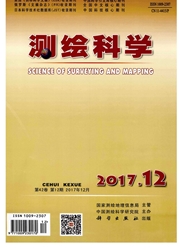

 中文摘要:
中文摘要:
空间分析是揭示空间数据中蕴含的空间格局以及要素之间关系的过程,是GIS中最具特色的内容。为解决目前空间分析中数据现势性、精细性不强的问题,本文首先在空间分析过程中引入LiDAR点云数据,其目的在于通过数据分类和提取,生成高精度DEM、DSM数据;接着从矢量DLG数据中提取与空间分析相关的地物要素数据,经过栅格化后生成地物要素的栅格数据;然后使用从LiDAR点云数据生成的DEM数据、DSM数据,结合栅格化的地物数据,经过归一化等处理,生成单一影响因子下的空间分析栅格图;最后根据各种数据对空间分析的影响权重,通过栅格叠置分析,生成多影响因子的空间分析栅格图,提高复杂空间分析算法的准确性和效率。
 英文摘要:
英文摘要:
Spatial analysis is the course of revealing the spatial pattern of the data and the relationship between of the features. It is the most important content of GIS. In order to solve the problems existed in the real-time maintenance and keep high precision of the data in spatial analysis, a method was put forward in this paper: firstly, the algorithm introduced the LiDAR point cloud data to generate the DSM through data categorization and extraction; secondly, the algorithm extracted the terrain feature data from the vector DLG data, and generated the rasterized terrain data; then it used the DEM data, DSM data and the rasterized terrain data to generate the spatial analysis map with the single impact factor through those operations such as normalization, etc. Lastly, it generated the final spatial analysis map with multiple im- pact factors through raster overlay analysis according to the factor weights. The test proved the feasibility of the algorithm with high precision.
 同期刊论文项目
同期刊论文项目
 同项目期刊论文
同项目期刊论文
 期刊信息
期刊信息
